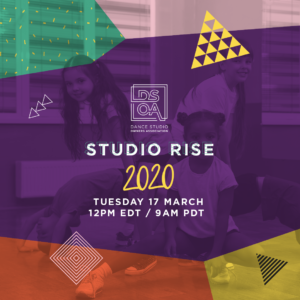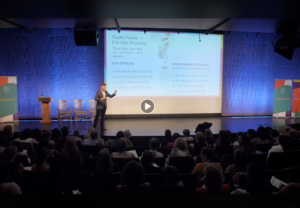By DSOA Studio Growth Coach, Jane Grech.
As dance studio owners, it may feel like you are the only one that truly cares about your studio. Of course this is most likely not true, but it can most certainly feel that way at times.
“How do I get my team to care more” or “How do I make my team want to do the little jobs that set us apart from our competitors” are two questions I get asked frequently.
Here’s the bad news.
You can’t make people care.
You can’t make people do anything.
You are not in control of that.
What you can do is influence your team to care more, through dissecting what it is that you really mean.
That’s the true challenge here.
Are your expectations clear for your team? Have you truly defined what ‘caring more’ looks and sounds like? When I speak with leaders I like to gently remind them that there should be no grey areas in behavioural expectations. In fact quite the opposite, expectations should be very black and white. You need to create a high level of clarity around setting standards, monitoring behaviours and highlighting gaps in performance. Without this, your team will be inadvertently letting you down or appearing to not care as much as you.
It’s highly likely that your team do care, they simply aren’t showing it through the right behaviours. It’s your job as leader to unpack this and to work to understand their perspective.
Asking questions is a powerful tool to help you.
Ask if there is anything unclear about any of the areas they are not performing. Avoid simply thrusting your own ideas and demands to them – this does not work to see the situation from their perspective. Ask for their feedback. Why have they not been able to display the behaviours you require? Their answers will most likely provide opportunities for your studio to improve in terms of processes, systems or documentation.
From here, you can then share your own perspective. As the owner you DO see the world differently to your team. It is your role to help them see a new perspective and show them how to close the gap on what behaviours they are displaying and what behaviours you need them to display, and why this is important.
Again, asking questions is a useful tool.
One technique is to share with your team the 5 underlying ‘Why’s’ in an effort to discover the cause and effect relationship of the problem, task or behaviour.
Here’s a very basic example:
Dance Studio ABC sends birthday cards to their students. It is the teacher’s responsibility to check their student’s birthdates and send a personalised card using the studio resources. Teachers have been encouraged to check their student databases at the start or end of each teaching shift and are paid for the time it takes to complete the task.
Q 1. Why do we send birthday cards to students?
A1. So that we acknowledge our students on their special day.
Q2. Why do we want to acknowledge them on their special?
A2. So that they feel good about themselves
Q3. Why do we want them to feel good about themselves?
A3. So they associate their experiences with and around dance as positive and so they feel supported. They will feel like they belong to a community and are then more likely to keep dancing in general, and more specifically, with us.
Q4. Why do we want them to feel part of a community and keep dancing?
A4. Belonging to a community is linked with having high levels of positivity, confidence and high self-worth and because we know of the true value of having dance in our lives.
Q5. Why do we want them to have high levels of positivity, confidence and self-worth?
A5. Because that’s our underlying ‘why’ : we are here to care for students and show them they matter, leaving a positive legacy and being an integral part of their lives.
Sharing or asking your team to unpack some of the behaviours and why you want them to complete what may appear a somewhat menial task, encourages a much deeper perspective.
Is it possible, that this level of understanding has up until now been assumed by you, because it comes so easily to you, as the owner or leader?
Asking questions together with highlighting the gaps between expected and displayed behaviours will support your team and increase your influence, which more times than not is rewarded with greater levels of ‘care.’
 Jane Grech is the author of Dance Studio Success as well as the owner of the Jane Grech Dance Centre in Adelaide. She is also a loving wife, mother of 3 gorgeous children and our DSOA resident expert when it comes to studio culture and leadership.
Jane Grech is the author of Dance Studio Success as well as the owner of the Jane Grech Dance Centre in Adelaide. She is also a loving wife, mother of 3 gorgeous children and our DSOA resident expert when it comes to studio culture and leadership.
Join Jane and our vibrant community of Dance Studio Owners inside the Dance Studio Owners Association for exclusive training, coaching and resources to help you grow your studio and get your life back.
SHARE THE LOVE
[Sassy_Social_Share]

YOUR 7 DAY GUIDE TO ATTRACTING STUDENTS

Increase Profits
Through Introducing Additional Revenue Stream





